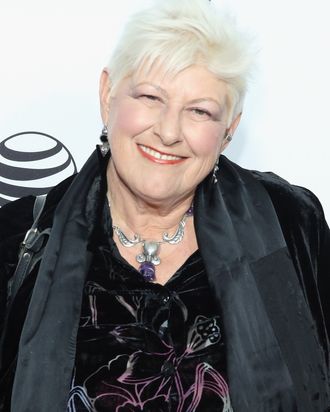
This article originally ran in January 2020. We are republishing it today in recognition of Anne Beatts’ recent passing.
Fame, at least lasting fame — the your-work-goes-down-in-history kind, often accompanied by fat royalty payments — is a club that thinks of itself as an unbiased meritocracy, blind to everything but aesthetic innovation and popular success. It’s never quite worked out that way. When we look at the past, we still see generations of great talents who never quite got their due critically or commercially, many of them left relatively unsung. In this ongoing series, our critics pick artists they feel remain underappreciated and tell their stories and sing their praises.
In conversations about portraits of teenage life from the 1980s, the first name that invariably gets mentioned is John Hughes. That makes sense. The filmmaker’s coming-of-age canon — which includes Sixteen Candles, The Breakfast Club, and Ferris Bueller’s Day Off — was enormously influential and is still actively referenced in today’s high-school movies and TV shows. But there’s another name that doesn’t come up nearly as often and definitely should: Anne Beatts.
Like Hughes, Beatts got her start by working at National Lampoon, becoming the first female editor at the male-dominated comedy institution. She was also a member of the original writing staff of Saturday Night Live, working as one of three women writers in an atmosphere often likened to a frat house. Two decades before Tina Fey pulled off a similar move, Beatts left the show to create and produce her own television series. As People magazine put it in a 1983 profile of Beatts, “Mary Tyler Moore had Grant Tinker, Carol Burnett had Joe Hamilton, and Lucy had Desi; Anne Beatts has chutzpah.”
The series was Square Pegs. With the exception of The Facts of Life, the majority of teen-focused TV comedies in the late 1970s and early ’80s — Happy Days, What’s Happening!!, Welcome Back, Kotter — focused on male protagonists. Square Pegs was shaped by a girl’s point of view and featured misfit heroines Patty Greene, played by Sarah Jessica Parker (it was her big break), and Lauren Hutchinson, played by Amy Linker. Half of the 20 episodes in its first and only season, which aired in 1982 and 1983, were directed or co-directed by a woman, Kim Friedman. At Beatts’s insistence, the writing staff was initially composed of five women and just one man, Andy Borowitz.
Square Pegs, which focused on ongoing efforts by Patty and Lauren to “click with the right clique,” was innovative in other ways. Shot single-camera style in an abandoned high school, it looked messy rather than three-camera, Hollywood-set slick. Its characters often spoke in catchphrases (“Totally different head — totally”), but the story lines effectively illustrated how small things — wearing glasses, getting invited to a slumber party — are a very big deal in adolescence. Anne Beatts, a self-proclaimed nerd in high school, understood that.
The show was also just plain cool, speaking to teens with a shared interest in their interests that made young people feel seen before the Hughes movies would have a similar effect. No other show on TV back then would have focused an entire episode on a Pac-Man addiction or a New Wave–themed bat mitzvah that featured the actual band Devo performing “That’s Good.” (The music on this show was on point.)
At least according to a 1984 TV Guide exposé titled “Anatomy of a Failure: How Drugs, Ego, and Chaos Helped Kill Square Pegs,” the show ended messily. Beatts moved on, eventually becoming an executive producer for A Different World and, more recently, co-developing an animated take on The Blues Brothers. Square Pegs arrived on TV a month after Amy Heckerling’s Fast Times at Ridgemont High hit theaters, and it aired its final episode more than a year before Hughes’s Sixteen Candles was released. Those and other more obvious touchstones of the era have overshadowed the importance of the show she created. But whether they realize it or not, every teen series and movie that followed Square Pegs owes it, and Anne Beatts, a debt of total gratitude. Totally.
*This article appears in the January 6, 2020, issue of New York Magazine. Subscribe Now!


